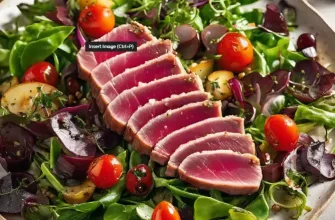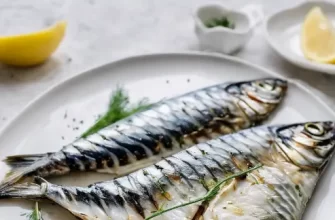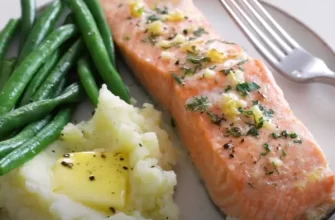Whether it’s done in the comfort of one’s home or on a commercial scale, the process involves curing and exposing the fish to smoke for a specified period.
This traditional method has evolved with modern twists, but its essence remains the same: adding an irresistible smoky taste to the tender, oily flesh of salmon. Home cooks and professional chefs alike appreciate smoked salmon for its versatility in dishes, ranging from simple appetizers to elaborate entrees.
By artfully combining curing salts, wood chips of varying flavors, and precise temperature control, a beautifully smoked salmon emerges, ready to be savored as a delicacy enjoyed across cultures and cuisines. With each bite, the smoky nuances and the soft textures remind us of the craftsmanship and patience behind this age-old technique.
Why Smoke Salmon
Smoking salmon is a practice cherished by gourmands and culinary enthusiasts alike for its tantalizing flavor and texture transformation. But why exactly do we smoke this particular fish?
Firstly, smoking salmon extends its shelf life, making it a convenient choice for those who appreciate leisurely enjoyments without the rush of an expiration date. Simultaneously, the smoking process imparts an intricate smokiness that beautifully complements the salmon’s natural richness—truly an epicurean delight.
Beyond taste, smoked salmon boasts versatility in the culinary realm; it can be the star of a lush bagel topping, an elegant addition to hors d’oeuvres, or even a sophisticated twist in pasta dishes. It also offers a good source of omega-3 fatty acids, which are essential for heart health, thus marrying indulgence with nutrition.
Moreover, salmon is a sturdy fish that withstands the smoking process well. Its high fat content helps it to absorb the flavors of the wood smoke, resulting in a moist and flavorful end product. For these reasons, smoking salmon has become a celebrated tradition, with its luxuriously smoky notes gracing tables worldwide as a sign of refined taste and culinary craftsmanship.
How to smoke salmon at home: 6-step instructions
If you’re looking to replicate the artistry of smoked salmon in your own kitchen, here’s a simple guide:
- Select Your Salmon: Start with a fresh, high-quality salmon. Look for a firm, thick cut to ensure it holds up well during smoking.
- Cure the Fish: Mix a dry cure of equal parts sugar and salt, and cover the salmon flesh. This helps to draw out moisture, which is essential for texture.
- Rinse and Dry: After curing (usually for a few hours to overnight, depending on size), rinse off the cure thoroughly and pat the salmon dry. Let it air-dry until tacky to the touch.
- Prepare Your Smoker: Preheat your smoker and add your selected wood chips. Fruitwoods like apple or cherry are great for a mild, sweet flavor, while hickory or oak impart a stronger taste.
- Smoke the Salmon: Place the salmon on the rack skin-side down and smoke at a low temperature (150-160°F) until the fish is opaque and flaky. This usually takes a few hours.
- Rest and Enjoy: Allow the salmon to rest before indulging. Serve it as is or incorporate it into a myriad of dishes – from appetizers to entrees.
With patience and attention to detail, you can achieve that desirable smoky delicacy right at home!
How to smoke salmon industrially
Industrial smoking of salmon is a delicate yet systematic process that ensures both flavor and safety on a large scale. The procedure typically begins with the selection of high-quality salmon, which is then moved through a series of controlled steps.
Scaling and Filleting: The salmon are first scaled and filleted by machine to ensure consistency and efficiency.
Brining: The fillets are then submerged in a brine solution, which can include water, salt, sugars, and sometimes spices, to enhance flavor and aid in preservation.
Drying: After brining, the salmon fillets are carefully dried to form a pellicle, the sticky surface that allows smoke to adhere.
Smoking: The fillets are placed into industrial smokehouses where they are exposed to controlled smoke generated from smoldering hardwood chips or sawdust. This process can vary in time and temperature depending on the desired flavor and texture.
Cooling and Packaging: Once smoked to perfection, the salmon is cooled rapidly to halt the cooking process and then vacuum-sealed in packaging to maintain freshness.
Industrially smoked salmon undergoes rigorous quality checks and adheres to food safety regulations, ensuring that the product is consistently delicious and safe for consumption.
Benefits and harms of smoked salmon
Smoked salmon is treasured worldwide for its rich flavor, convenience, and significant health perks. As a lean protein source, it contributes to muscle maintenance and feels satisfying without being calorie-heavy. It’s brimming with omega-3 fatty acids, known for supporting heart health and reducing inflammation, as well as a good dose of vitamin D, vital for bone health.
However, caution is necessary as with any good thing. Smoked salmon contains sodium; while suitable in moderation, excessive consumption can lead to high blood pressure. The smoking process may also introduce harmful compounds, like polycyclic aromatic hydrocarbons, which are linked to cancer risks. Furthermore, pregnant women or individuals with compromised immune systems should steer clear of raw or undercooked smoked salmon due to potential bacterial contamination.
Ultimately, when enjoyed responsibly, smoked salmon is a nutritious addition to a balanced diet, but awareness of its potential harms is crucial for making informed dietary choices.
What other fish it makes sense to smoke to make it tasty and healthy?
Your culinary adventures don’t have to end with salmon; there’s a whole sea of options for delicious and healthy smoked fish. Take trout, for instance—it smokes beautifully and brings a delicate flavor that’s often compared to salmon, but with its own twist. Or consider mackerel, a robust fish rich in essential oils and omega-3 fatty acids, which takes on a luxurious texture and savory depth when smoked.
Whitefish, too, is a prime candidate for smoking. With its flaky, mild flesh, it absorbs the smoky notes elegantly, while remaining a lighter option that’s versatile for a range of dishes. Don’t forget haddock either, which when smoked, known as Finnan haddie, becomes the heart of classic comfort foods like chowder.
And if you’re aiming for heartier flavors, sablefish, also known as black cod, offers a buttery and smooth experience that practically melts in your mouth after smoking. The key is to choose high-quality, sustainably caught fish and smoke them properly to elevate their natural flavors while keeping the nutritional benefits intact.









